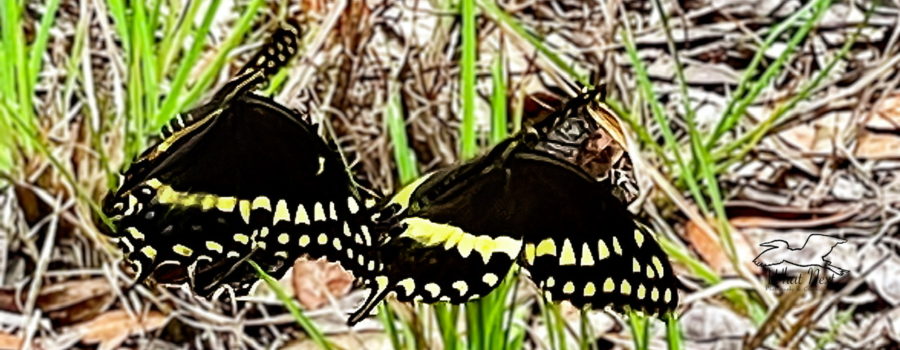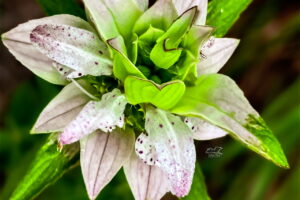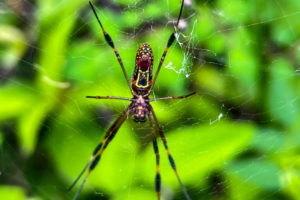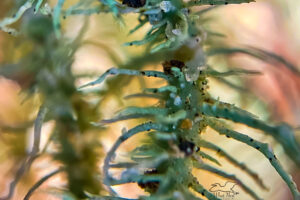The Palamedes Swallowtail Does an Interesting, Beautiful Mating Dance

One afternoon, on one of my nature walks, I came through a small clearing in the woods where two Palamedes swallowtails (Papilio palamedes) were engaged in a mating ”dance”. It was quite an interesting ritual that was fascinating to watch. During the dance the male and female both fly about, usually with the male a slight bit above and behind the female. While in that position, the male releases pheromones that are attractive to the female. They will then flutter around each other interactively and sometimes land on the ground near each other. Then they will be off again, following the same pattern over and over until they decide to mate. I watched and photographed this pair for about half an hour and they were still busy wooing each other when I moved on. I saw a couple more interesting species on that walk, but these two butterflies were definitely the highlight.

The Palamedes swallowtail is one of several dark colored swallowtail butterflies that live in the central Florida area. It can be distinguished from the others by it’s size and the broad yellow band across the hind wings. It also has a thin yellow band along the front of the hind wing, but it can be difficult to see when the wings are closed and the butterfly isn’t moving too much. Both the males and females of this species look very similar as you can see by these images. These gorgeous butterflies are usually found in moist wooded areas like pine flatwoods, swamp edges, along lake edges, and near slow moving rivers. They are also common up here in the sandhills when there has been a lot of rain like there has been this summer. Palamedes swallowtails can be found from southern Virginia along the Atlantic coast to Florida and from Florida along the Gulf coast to Texas. There is also a small, isolated population in Mexico that is considered a seperate subspecies, P. p. leontis.

Adult Palamedes swallowtails feed on quite a few different flowers including the sweet pepper bush, Pickerelweed, and thistles. In fact, in the sandhills, the Palamedes swallowtail is the primary pollinator of our thistles. I do have to say that I often see them feeding from the thistle flowers, especially when they are in the peak of their bloom. There are also quite a few non-native ornamentals that these butterflies are attracted to, and most gardeners welcome them. The caterpillars and larvae are a little more particular about their food sources than the adults, and feed almost exclusively on plants from the laurel family (hence the alternative name of laurel swallowtail). Some of these plants include the red bay and swamp bay. Recently, issues with laurel wilt, a fungal infection of laurels, has resulted in decreases in the numbers of Palamedes swallowtails in affected areas. Fortunately, these butterflies are still doing well in most areas, and many of the previously infected red bays are regrowing from their stumps, and the butterflies are rebounding with them.

All of the swallowtail butterflies in this area are very striking, and the Palamedes is no exception. I have seen them performing this mating dance quite a few times over the years, but I have never photographed it before (don’t ask me why). It was really enjoyable following these two around in that clearing. There is an almost playful aspect to much of the dance that makes it quite interesting to observe.






Recent Comments